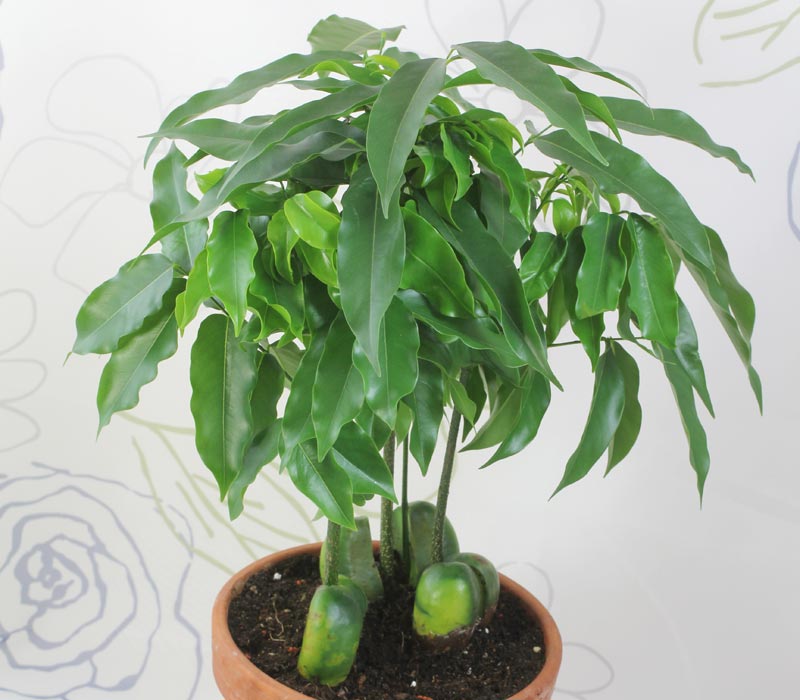Moreton Bay Chestnut, Australian Chestnut, Black Bean, Lucky Bean
Castanospermum australe is closely related to the Sensitive Plant (Mimosa pudica) but not to the Chestnuts. The native to Australia tree belongs to the bean family (Fabaceae). In its natural habitat it reaches a height of 40 metres.
The about 3-4 cm or longer poisonous seeds of the commonly known as Moreton Bay Chestnut or Australian Chestnut plant look similar to chestnuts – at least at first sight.

Care
- Lighting: sunny to light shaded
- Soil: a regular mix or organic cacti soil
- Watering: allow to moderately dry between the waterings
- Feeding: in spring and summer
- Temperature: average warmth the year round with a winter minimum of 10-15 °C/50-59 °F
- Propagation: seeds
Lighting
Castanospermum australe is a shade tolerant tree but grows best if located sunny and bright with a minimum of 4 hours of sunlight per day.

Soil
A regular mix for container plants, pure or blended with sand such as an organic cacti soil will work.
Watering
Let the soil moderately dry between the waterings. Sitting in water can lead to root rot and has to be avoided.

Feeding
In the first year after purchase or repotting the Moreton Bay Chestnut does not have to be fertilized. Afterwards liquid plant food may be added monthly from spring to summer. Instead granular fertilizer or spikes can be given in the beginning and the middle of the growing season.
Temperature
Average warmth throughout the year is welcome. A minimum of 10-15 °C/50-59 °F with reduced watering will be tolerated.

Propagation
Castanospermum australe can be grown from seeds. Cuttings do not work.

